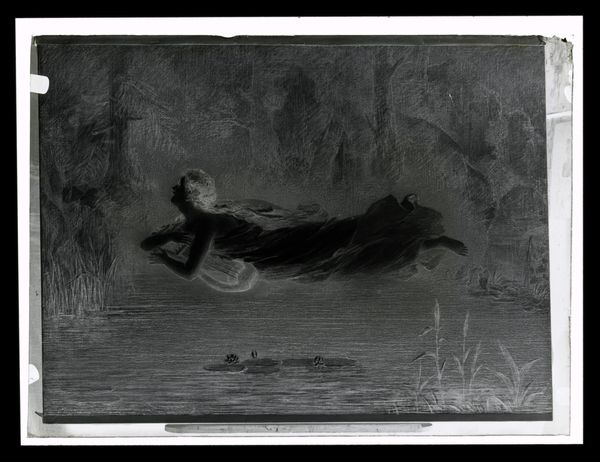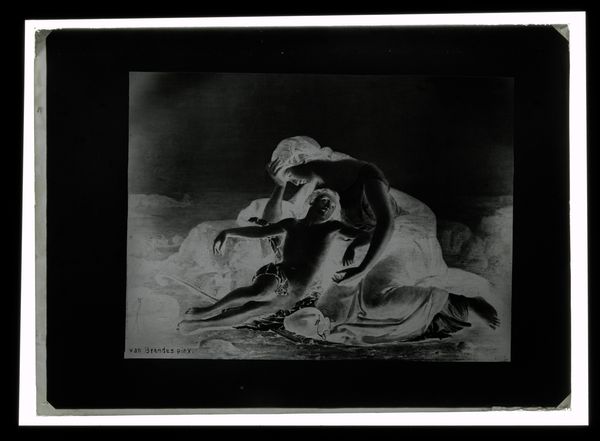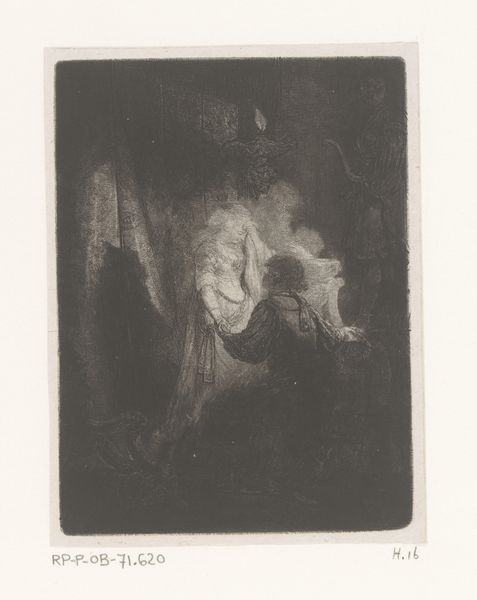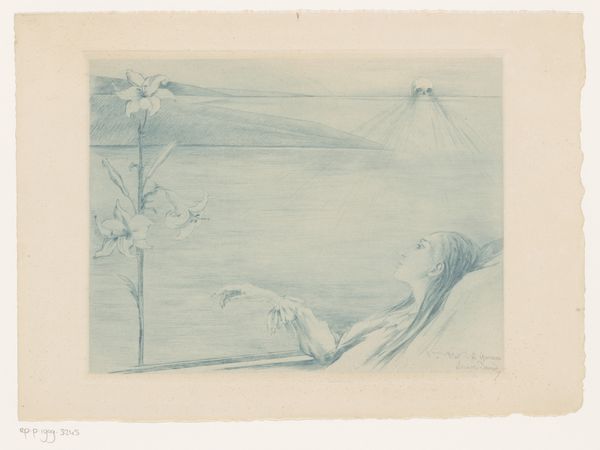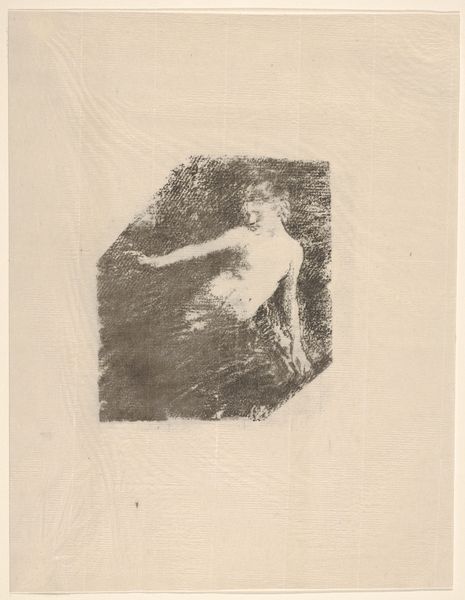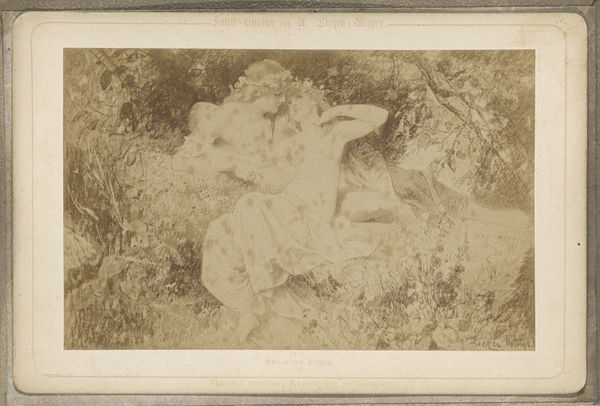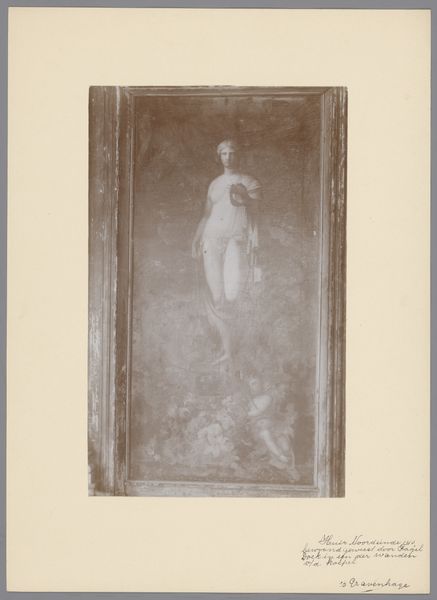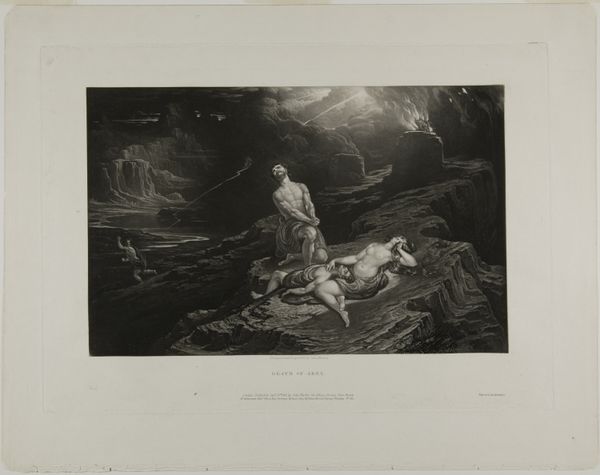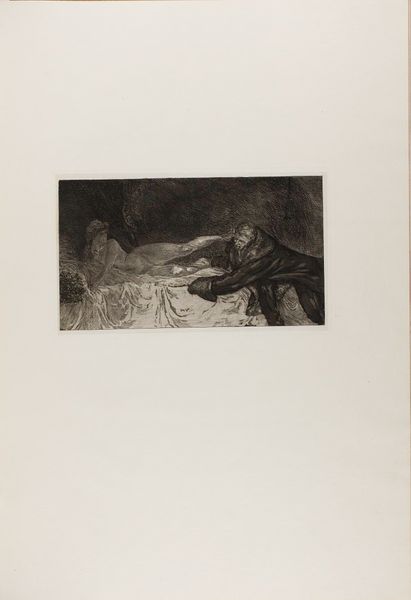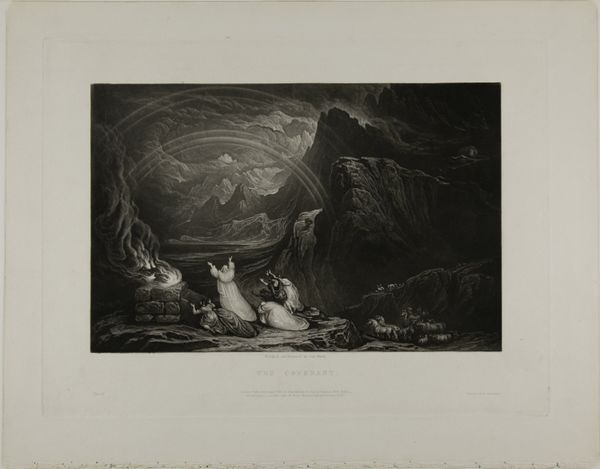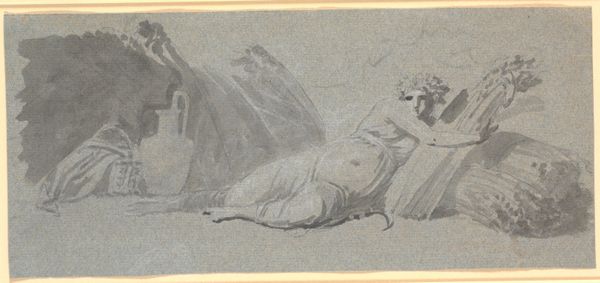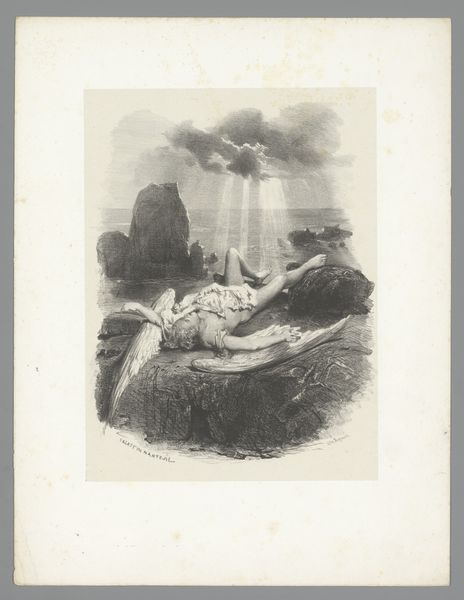
Fotoreproductie van een schilderij van een liggende vrouw met lier c. 1865 - 1900
0:00
0:00
Dimensions: height 88 mm, width 119 mm
Copyright: Rijks Museum: Open Domain
Editor: This is a photographic reproduction of a painting of a reclining woman with a lyre, dating from around 1865 to 1900, by Laurens Lodewijk Kleijn. It has an ethereal quality, almost as if she’s floating. How do you interpret this work formally? Curator: Observe how the composition relies on a stark contrast between the figure and the darkened background. The negative space around the woman enhances her prominence. Her pose, almost weightless, counteracts the heavy strokes of the landscape, yes? What effect do you think that contrast is achieving? Editor: Perhaps to make her appear almost divine, juxtaposing the earthly landscape? How does the fact it’s a photo of a painting influence your interpretation? Curator: The photograph flattens the painting’s texture. We’re presented not with brushstrokes, but tones and lines defining shape and form. Note also how the monochromatic palette strips the painting to its core elements of form and light. One must consider how this transforms the original artist's intentions. Editor: So, you’re suggesting the translation into photography changes its fundamental properties and reception? It loses its Romantic emphasis on feeling, maybe? Curator: Precisely! The focus shifts to the structural arrangement: the linear elegance of the lyre contrasting with the sinuous curves of her body; the mirroring of her form in the implied wave patterns above. We become attentive to the interplay of line and shadow, substance and void. Editor: I hadn’t considered that it’s about its forms and not emotions. Thank you, I’m seeing so much more than first meets the eye! Curator: And I'm reminded of how photography both preserves and alters our access to painterly representation.
Comments
No comments
Be the first to comment and join the conversation on the ultimate creative platform.

